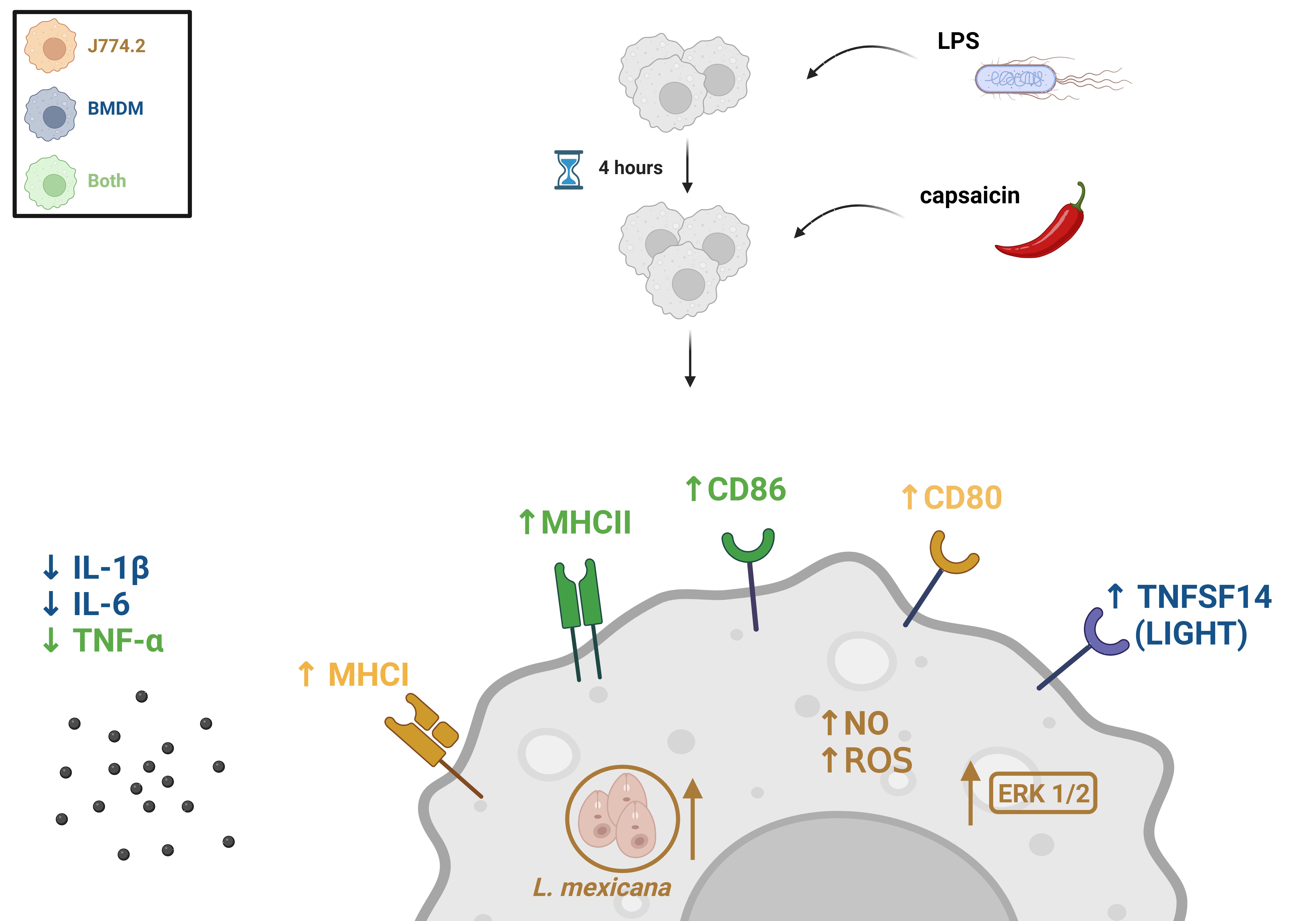Capsaicin and Immune Cells

Chronic inflammatory pain affects billions of people globally, posing a significant public health challenge. Despite its prevalence, effective pain treatment remains difficult due to an incomplete understanding of the underlying molecular mechanisms. One group of molecules, transient receptor potential vanilloid (TRPV) channels, act as molecular sensors on sensory nerve cells and are involved in neurogenic inflammation. Interestingly, TRPV channels are also found on various immune cells, but their role in immune responses is still not fully understood, with many conflicting studies published.
In our study, we focused on capsaicin, the compound responsible for the heat in chili peppers, which directly activates TRPV channels. We treated macrophages with capsaicin either before or after inducing an inflammatory response using lipopolysaccharide (LPS), a common trigger of inflammation. We then measured immune reactions, including changes in surface molecules, cytokine production, and signaling pathways related to inflammation. Additionally, (together with the Department of Parasitology) we assessed the functional capacity of these macrophages by infecting them with Leishmania mexicana, an intracellular parasite, to evaluate their ability to respond to infection.
Our results demonstrated that macrophage responses to capsaicin were highly dependent on the presence or absence of an inflammatory environment. We found that when macrophages were pre-treated with LPS and then activated with capsaicin, they shifted toward an anti-inflammatory M2b-like polarization state.
This study highlights the intricate communication between the nervous and immune systems, particularly how TRPV channel activation by capsaicin can modulate immune responses under specific conditions. Our findings provide new insights into neuro-immune interactions, offering potential new avenues for addressing chronic inflammation and pain.





















